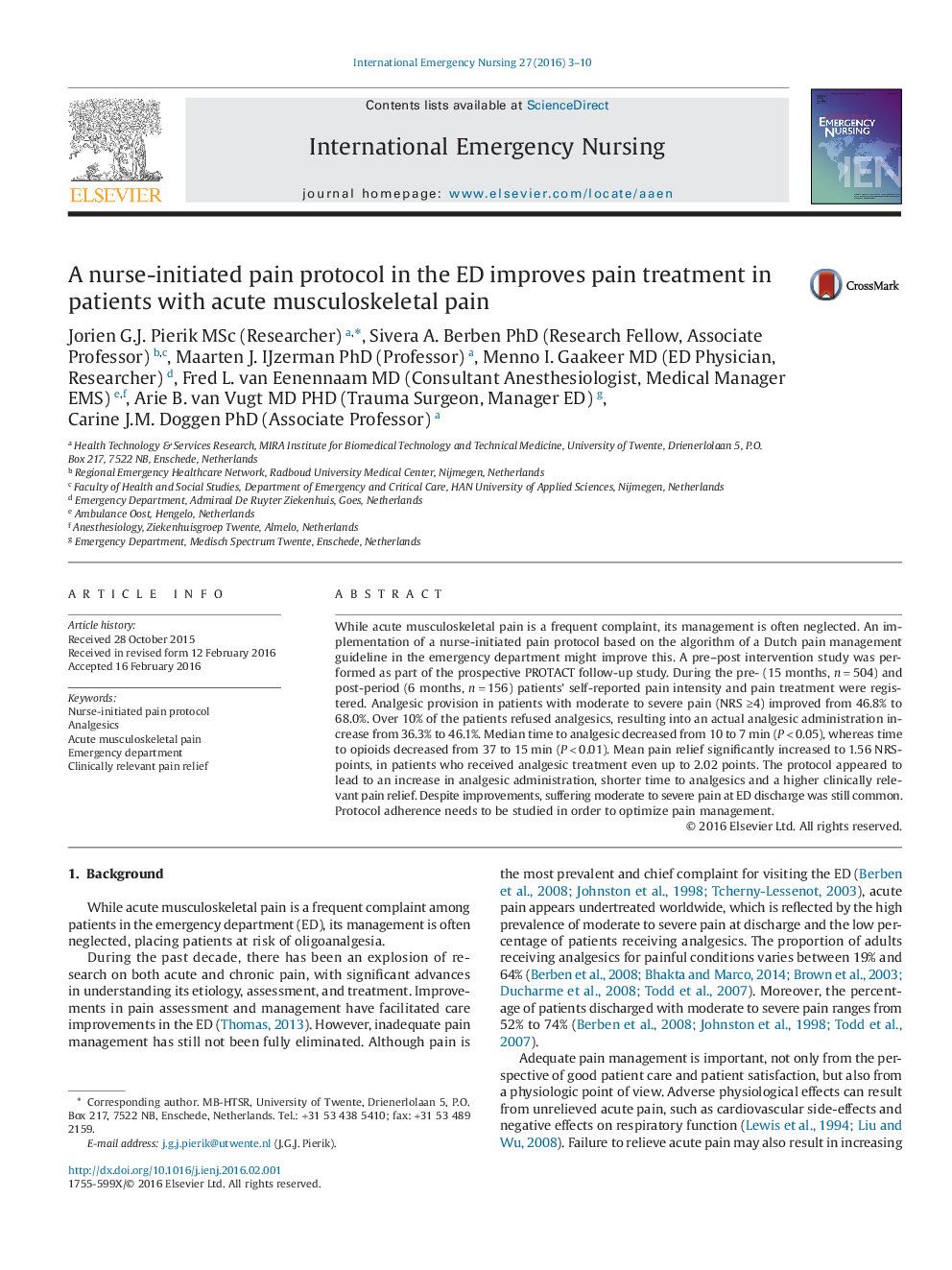| Article ID | Journal | Published Year | Pages | File Type |
|---|---|---|---|---|
| 5863283 | International Emergency Nursing | 2016 | 8 Pages |
â¢The nurse-initiated pain protocol improved analgesic provision and administration.â¢A high percentage of patients refused to take analgesics.â¢Protocol implementation shortened time to analgesics, especially to first opioid.â¢Mean pain relief increased, with analgesic treatment even up to 2 NRS-points.â¢A high percentage of patients still suffered moderate to severe pain at ED discharge.
While acute musculoskeletal pain is a frequent complaint, its management is often neglected. An implementation of a nurse-initiated pain protocol based on the algorithm of a Dutch pain management guideline in the emergency department might improve this. A pre-post intervention study was performed as part of the prospective PROTACT follow-up study. During the pre- (15 months, nâ=â504) and post-period (6 months, nâ=â156) patients' self-reported pain intensity and pain treatment were registered. Analgesic provision in patients with moderate to severe pain (NRS â¥4) improved from 46.8% to 68.0%. Over 10% of the patients refused analgesics, resulting into an actual analgesic administration increase from 36.3% to 46.1%. Median time to analgesic decreased from 10 to 7âmin (Pâ<â0.05), whereas time to opioids decreased from 37 to 15âmin (Pâ<â0.01). Mean pain relief significantly increased to 1.56 NRS-points, in patients who received analgesic treatment even up to 2.02 points. The protocol appeared to lead to an increase in analgesic administration, shorter time to analgesics and a higher clinically relevant pain relief. Despite improvements, suffering moderate to severe pain at ED discharge was still common. Protocol adherence needs to be studied in order to optimize pain management.
